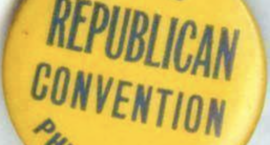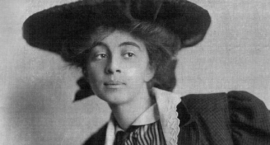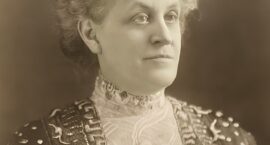With the endorsement of the party whose legislators provided the votes needed to successfully put the 13th, 14th, 15th and 19th Amendments into the Constitution now assured, the battle will soon move to the Democratic Convention next month. Then it’s back to Congress to get the approval of 2/3 of the House and Senate, followed by a nationwide campaign to get 36 of the 48 State legislatures to ratify.
Tag: Today in Feminist History
Today in Feminist History: Suffragists Flock to National Women’s Rights Convention (September 8, 1852)
The convention will continue two more days, and the struggle will go on for as long as may be necessary. But if future advocates of equality for women have the same dedication as those present today, there is no doubt that Elizabeth Oakes Smith’s prediction of victory will prove true, and those who can say they were among the first to begin the work of winning total equality for women will be especially honored.
Today in Feminist History: Congressional Subcommittee Approves Equal Rights Amendment (May 30, 1936)
The amendment’s House sponsor, Rep. Louis Ludlow, Democrat of Indiana, called today’s favorable recommendation “an epochal event in the advancement of the cause of women in America,” and also said that “it gives valuable moral support and impetus to a cause that is daily gaining ground among right-thinking people. The Equal Rights Amendment is a necessary corollary and supplement of equal suffrage and its adoption will be the crowning act that will bring women to a status of the complete emancipation to which they are entitled by all the rules of right and justice.”
Today in Feminist History: Rosalind Weiner to Become Youngest Person Ever Serving on LA City Council [+SPECIAL UPDATE] (May 26, 1953)
A 22-year-old woman will soon become the youngest person ever to have served on the Los Angeles City Council, only the second woman ever to have done so, and the Council’s first Jewish member since 1900, all thanks to tonight’s election victory.
Today in Feminist History: Suffrage Philosophies. Diverge (May 22, 1915)
Though all suffragists have the same goal of “Votes for Women,” some give priority to winning suffrage on a State-by-State basis, using conventional methods, while others focus on passage of the Susan B. Anthony (nationwide woman suffrage) Amendment, and take a more militant, though non-violent, approach.
Today in Feminist History: Jacqueline Cochran: Faster than Sound! (May 18, 1953)
Cochran flew faster over a 100-kilometer circular course than any pilot—male or female—has ever done, at 652 miles an hour.
Today in Feminist History: Retaining Her Legal Identity After Marriage (May 17, 1921)
This evening’s first meeting of a new organization called the “Lucy Stone League” proved quite a success, attracting a number of well-known people who engaged in a lively discussion about issues that still remain regarding a woman’s legal identity after marriage.
Today in Feminist History: Anna Louise Goessling Demands “Equal Pay for Equal Work” (April 29, 1905)
At present, elementary school teaching salaries for women start at $600 a year and can rise to a maximum of $1,440 after 11 years if they pass extra examinations. Male teachers begin with a salary of $900 a year and can reach $2,400 after 11 years if they pass the same examinations. Women who teach boys’ classes get an extra $60 a year bonus.
Today in Feminist History: Jeanette Rankin Votes ‘NO’ (April 6, 1917)
It was clearly a difficult decision for the Rankin—the only woman ever to serve in Congress, and who was sworn in just four days ago. She was one of less than 12 House Members who did not vote on the first roll call. But on the second call she rose to her feet and said: “I want to stand by my country, but I cannot vote for war.”
Today in Feminist History: N.A.W.S.A. Looks to Future of Women’s Suffrage (March 24, 1919)
Though nothing is ever certain in politics, there do appear to be enough votes in the new Congress to pass the Susan B. Anthony Amendment by the two-thirds majority required and send it to the states for ratification by 36 of 48. Regardless of whether that final step in the ratification process takes place before next year’s Presidential election or not, the end of the struggle is in sight, so it’s definitely appropriate to begin thinking about how women’s votes can best be used after the battle to win them is over.












